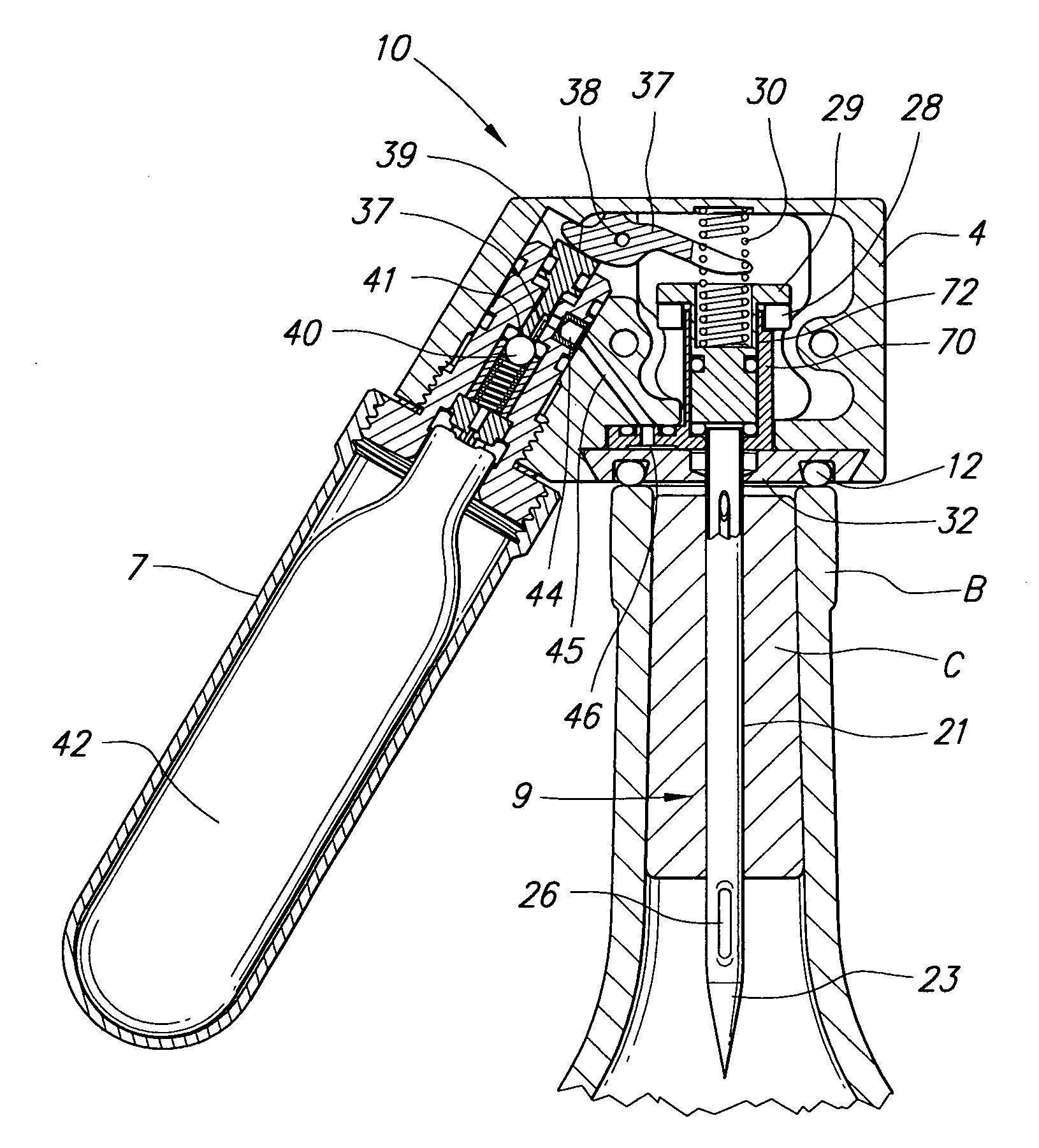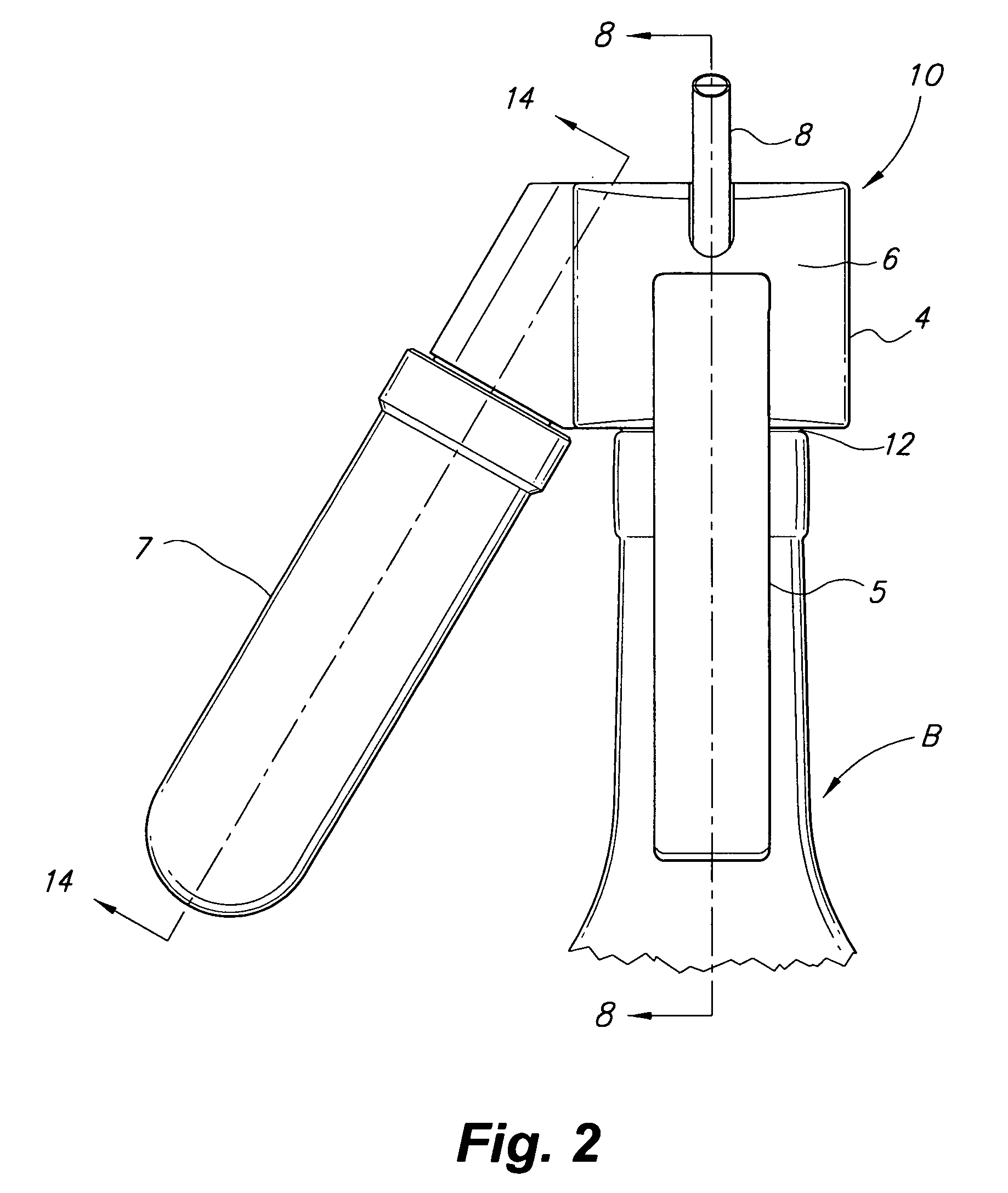Wine bottle sealing and dispensing device
a technology for sealing and dispensing devices of wine bottles, which is applied in the field of liquid dispensers, can solve the problems of reducing the quality and value of wine, affecting the quality of wine, and the wine immediately begins to react with the environmental air and begins to spoilage,
- Summary
- Abstract
- Description
- Claims
- Application Information
AI Technical Summary
Benefits of technology
Problems solved by technology
Method used
Image
Examples
Embodiment Construction
[0036]Referring to FIGS. 1-3, the wine bottle sealing and dispensing device 10 provides for the dispensing of wine from a wine bottle (such as exemplary wine bottle B, shown in FIG. 2) without exposing the wine in the bottle B to environmental air at any time. The device 10 includes a housing 4 adapted for mounting above an upper surface of a cork C (as shown in FIG. 7) of a corked wine bottle B. The housing 4 defines an open interior region therein. As best shown in FIG. 2, a decorative faceplate 6 may be attached to housing 4. It should be understood that the shape and relative dimensions of housing 4 (and faceplate 6) may be varied, and those shown in the drawings are for exemplary purposes only.
[0037]As shown in FIGS. 8-10, the device 10 has a hollow needle 9 having an upper open end 31 and a lower end 23, the lower end 23 having a liquid port 26 formed therethrough, as best shown in FIG. 9. The upper open end 31 is mounted to the housing 4 and projects downwardly therefrom, wit...
PUM
 Login to View More
Login to View More Abstract
Description
Claims
Application Information
 Login to View More
Login to View More - R&D
- Intellectual Property
- Life Sciences
- Materials
- Tech Scout
- Unparalleled Data Quality
- Higher Quality Content
- 60% Fewer Hallucinations
Browse by: Latest US Patents, China's latest patents, Technical Efficacy Thesaurus, Application Domain, Technology Topic, Popular Technical Reports.
© 2025 PatSnap. All rights reserved.Legal|Privacy policy|Modern Slavery Act Transparency Statement|Sitemap|About US| Contact US: help@patsnap.com



